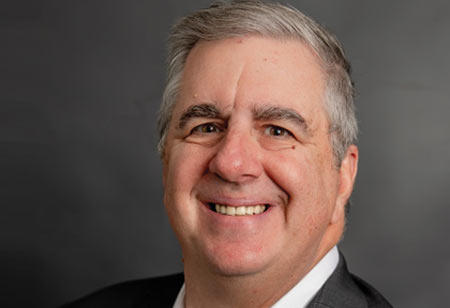

Thank you for Subscribing to Auto Business Outlook Weekly Brief

We all remember back in 2020-21 when supply chains were all bottled up due to the numerous delays in transportation. Ships were anchored off the coast of California for days and weeks on end, waiting for the ports to clear for the containers to be offloaded, only to have additional delays on the railroads to inland ports in the heartland of America. Once the containers are around at a port such as Chicago, it takes days for the container to be recovered and stripped, allowing the local trucker to recover the freight to deliver to the end customers.
End Customers never realized how complex supply chains were and how fragile they could be if something happened at any of the links in the process. Most companies use a global freight forwarder to arrange the entire logistics process of arranging pickup in a foreign country, arranging transportation to the US, and then arranging final mile delivery to the customers. There are many good forwarders out there, but they needed to have the experience, staff, or time to look for alternate options that were in the best interest of their customers. At Kem Krest, we faced potential customer issues if we did not devise a solution to reduce the total transit time on our LCL freight from Asia. The logistics team looked at the endto-end process and all the different touch points and transit times from origin to destination in Elkhart, IN, about two hours outside of Chicago, to determine the best possible solution to our problem. Air freight was not an option due to costs and similar issues with the airports. "At first, the forwarders challenged us, saying they wanted to do the entire shipment end to end. We pushed back, saying that their delivery rates were much higher, and the transit time was far higher than Kem Krest could get" We knew that we had to stay with ocean freight and get the cargo to the US, and from there, we could control the Inland from a West Coast CFS to our warehouses. Truckload pricing was sky-high at record levels if you could secure a driver. We tried working with our forwarders, but the truckload or LTL freight pricing needed to be reduced. Kem Krest has a great relationship with our LTL carriers and reached out to them to see if they recovered from the Container Freight Stations (CFS), as recovery could be tricky if you don't have all the necessary information when picking up the shipment. Once we discovered that our primary LTL carrier, R+L Carriers, had a special department based on the West Coast to handle pickups from the Los Angeles area CFS, we knew that transit time could be improved. We looked at the new total costs and found that the costs of recovering the freight at a West Coast CFS and using Kem Krest carrier saved us money while improving the total transit time. The reason is that our forwarders did not give Kem Krest any break on the LTL freight. Kem Krest had a different base rate year, an FAK, and high discounts in place with our carriers. The forwarders charged us the actual class, current year, and OK discounts. Inland freight was a pure profit center for the forwarders, and they did not look out for Kem Krest's best interests. At first, the forwarders challenged us, saying they wanted to do the entire shipment end to end. We pushed back, saying that their delivery rates were much higher and the transit time was far higher than Kem Krest could get. We also asked why they had not considered this and questioned whether they were the right forwarders for our business. One forwarder would not issue the delivery order, a necessary document to pick up at the CFS station. Again, another conversation was had, and let them know that if they did not, we would switch forwarders. We made this change in March 2021 and still use this process today, and it has saved us over $150K since the start. The significant paradigm change was for Kem Krest's logistics department to start understanding all the touch points in transportation and look for areas to reduce costs and transit time. It allowed us to control the final mile and not rely on the forwarder, who might have a higher priority customer to take care of instead of us. It also set the tone with the forwarders that we will change their pricing and change things if they are not price competitive. We have completed other similar processes for our full containers and our shipments to Alaska and Hawaii with similar results. Challenging the status quo process of shipping is sometimes difficult but can become rewarding, and we should not be afraid to do so.I agree We use cookies on this website to enhance your user experience. By clicking any link on this page you are giving your consent for us to set cookies. More info